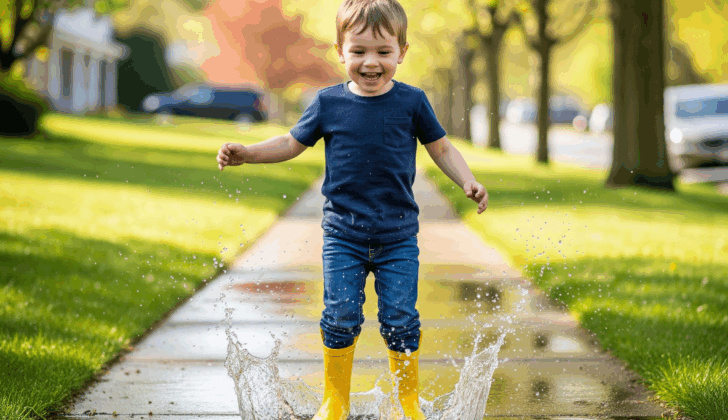When your child is learning to talk, it’s like a whole new world of sounds is opening up! One sound that can be tricky is the /j/ sound—like in jump, juice, or jungle.
As a speech-language pathologist, I work with many families whose kids just need a little extra help with this sound. The great news? With playful practice and a few simple tips, you can help your child master the /j/ sound right at home!
What Is the /j/ Sound?
The /j/ sound is the first sound in words like jump, juice, and jacket. It’s a “voiced” sound, made by stopping the airflow briefly and then releasing it with a little buzz. It’s like combining a soft /d/ with the “zh” sound from measure.
Most kids learn to say /j/ clearly by age 4, but it’s okay if they need a little longer. If your child is 4 or older and still says “dump” for jump, or leaves the sound off completely, it might be time to help them practice more directly.
Why Isn’t My Child Saying the /j/ Sound?
There are a few common reasons:
-
They replace it with another sound (“dump” for jump).
-
They leave it out entirely (“ump” for jump).
-
They don’t hear the difference in their own speech.
These patterns are typical at first, but they can hang around longer in some kids. The good news? /j/ is a sound that’s often easier to teach than others!
Easy Ways to Help at Home
Keep practice fun, short, and consistent. Just 5–10 minutes a day can make a big difference! Here’s how to get started:Target 3–5 Words at a Time
Pick everyday words your child already uses—this makes practice feel natural and meaningful.
Prompt Gently and Clearly
Auditory Prompt
“Listen to me: jump. Your turn—jump!”
Visual/Tactile Prompt
“Watch my mouth. My lips pop open when I say juice.” (You can also let them feel your throat to notice the buzzing sound.)
Break it Down
“Let’s just say the first sound: /j/, /j/, /j/. Now: jungle!”
Recasting (gentle correction)
Child: “I want ump.”
You: “Oh, you want to jump! Let’s say it together—jump!”
Fun /j/ Sound Games & Activities
You don’t need worksheets—just play! Here are easy activities that include the /j/ sound:
-
Jumping Game: Say jump each time you hop!
-
Juice Café: Pretend to serve juice, jam, and jug drinks.
-
Mirror Time: Practice silly /j/ words while watching your mouths.
-
Toy Play: Use jaguars, jellyfish, or pretend to eat jam!
-
Songs & Books: Sing “Jump up high!” or read stories like Jack and Jill.
/j/ Sound Word List to Practice
Choose 3–5 of these for each session:
Beginning /j/:
-
jump
-
juice
-
jungle
-
jeep
-
jacket
-
jelly
-
jam
-
jug
-
join
-
joke
Ending /j/ (for older kids):
-
cage
-
page
-
stage
-
edge
-
age
Note: Most younger kids benefit most from beginning /j/ words!
Tips for Daily Success
-
Keep it short: 5–10 minutes is plenty.
-
Celebrate every try: “Great job saying juice!”
-
Use your child’s interests: If they love breakfast, practice jam!
-
Look for natural moments: Say juice at snack time or jump during play.
-
Be consistent: A little every day adds up!
When to Get Extra Help
If your child is around 4–5 and still not using the /j/ sound—or they’re frustrated or hard to understand—it might be time to check in with a speech-language pathologist. An SLP can help figure out what’s going on and guide you with a plan.
You’ve Got This!
Helping your child learn new sounds is a journey—and you’re already doing something great by being involved. With short, fun practice and lots of encouragement, your child will be saying “jump,” “juice,” and “jungle” in no time!
Keep Learning & Stay Connected
Follow First Words Bright Futures on Facebook and Instagram for:
-
Daily speech tips
-
Fun activity ideas
-
Q&A with a pediatric SLP
Watch a Video example /j/ sound
Explore More:
- MDS: Bouncing into the /B/ Sound: Fun Home Strategies for Boosting Your Child’s Speech
- MDS: Hiss Happens: A Parent’s Guide to Helping Your Child Master the /s/ Sound
Disclaimer: This article offers general educational information. It is not a substitute for professional evaluation or treatment. Please consult a licensed Speech-Language Pathologist for personalized concerns regarding your child’s speech development.












